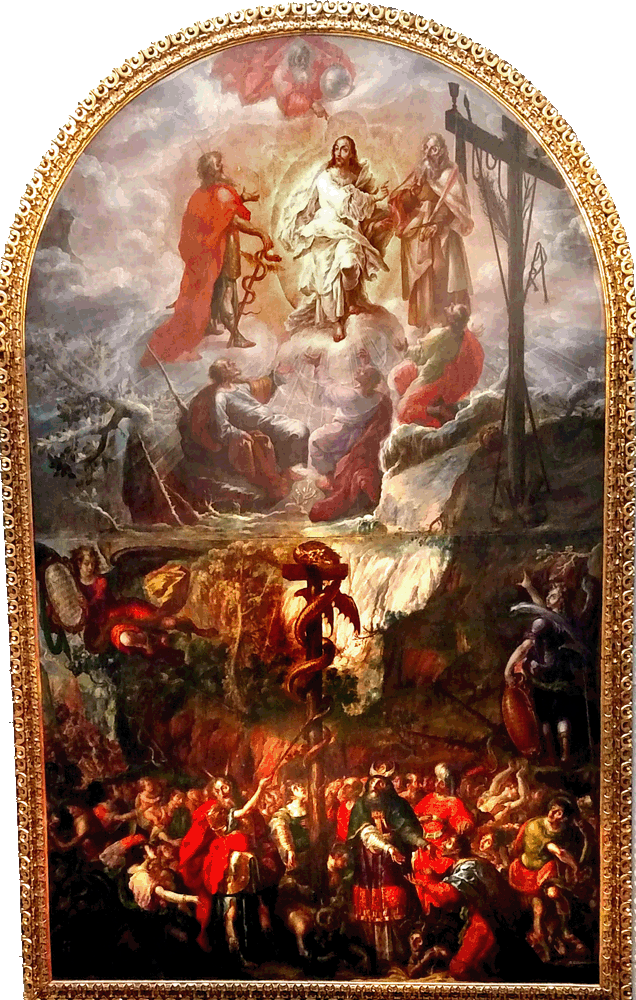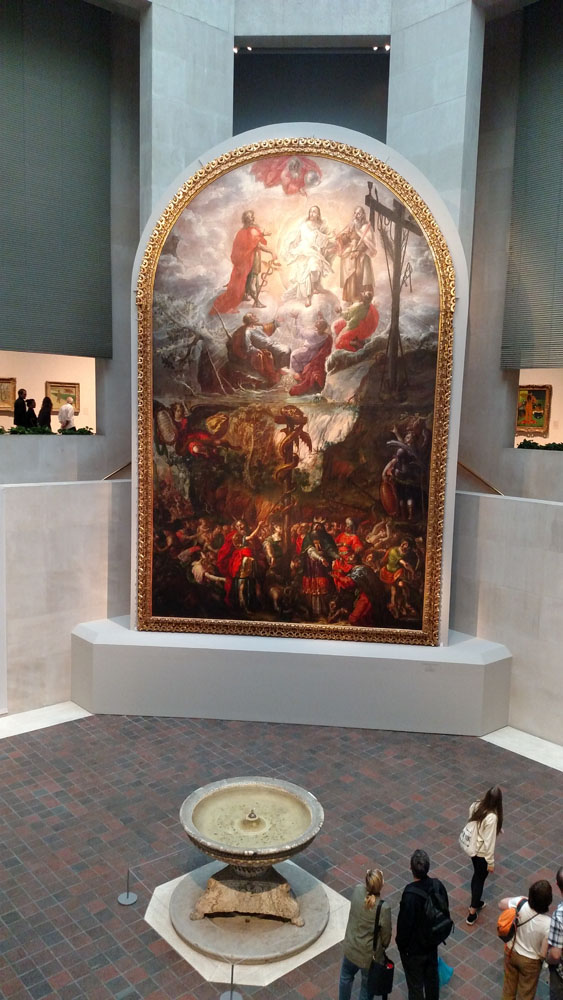



Cristóbal de Villalpando
Moses and the Brazen Serpent and the Transfiguration of Jesus
1683
Metropolitan Museum of Art
The upper register pictures the Transfiguration, an episode in Matthew 17:1-9, Mark 9:2-7 and Luke 9:21-27. Peter, James, and John look up as Jesus is "transfigured before them, and his face did shine as the sun and his garments became white as snow." He is flanked by Moses and Elijah, and at the summit the Father pronounces "This is my beloved Son, in whom I am well pleased: hear ye him."
The lower register depicts the episode of the bronze serpent recounted in Numbers 21. Moses ("horned" with two rays of light) points to the bronze serpent on a pole; those who look on it will be cured of the bite of saraph serpents. Aaron, who is not mentioned in the passage, stands on the other side of the pole gesturing to a man who bows in supplication. The relation of this episode to the cross in the upper right is drawn by Jesus in John 3:14-15, "as Moses lifted up the serpent…so must the Son of Man be lifted up, that whosoever believeth in him may not perish."
A visual echo of the bronze serpent appears with Moses in the upper register, where his staff is encircled by a snake and has a pair of wings, almost like the caduceus that is Mercury's attribute in classical iconography. (A caduceus has two serpents, not just one. The staff of Aclepius, associated with physical healing, has a single serpent but no wings.)
Seen with the cross are symbols of Christ's passion: the scourge, the spear, and the sponge. The chalice on the crosspiece symbolizes the blood of Christ that saves mankind, especially as it is experienced in the Eucharist.
The most complex of these symbols are the branches of hyssop (on the other side of the cross from the viewer). In John 19:29, hyssop is mixed into the vinegar offered to Jesus on the cross. Its significance traces to cleansing rituals detailed in Leviticus 14:34-57 and Numbers 19:14-19, in which the priest used hyssop branches to sprinkle water mixed with the blood of a sacrificial victim. Christian commentators saw the rituals as a foreshadowing of the spiritual cleansing effected by the blood of Christ and brought to Christians in baptism.1 The metaphor of hyssop for cleansing appears first in Psalm 50(51):9, "Thou shalt sprinkle me with hyssop, and I shall be cleansed, and I shall be made whiter than snow." The "whiter than snow" simile reappears in the gospels' descriptions of Jesus' clothing in the Transfiguration.2
View this image in full resolution.
Read more about images of the bronze serpent.
Read more about images of the Transfiguration and Crucifixion.
Photographed at the museum by Richard Stracke, shared under Attribution-NonCommercial-ShareAlike license.